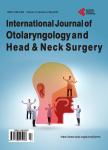Atrial Septal Defect and Left Recurrent Laryngeal Nerve Paralysis: A Case of Ortner’s Syndrome and Literature Review
Atrial Septal Defect and Left Recurrent Laryngeal Nerve Paralysis: A Case of Ortner’s Syndrome and Literature Review作者机构:Department of Head and Neck Surgery UCLA David Geffen School of Medicine Los Angeles USA Radiological Sciences UCLA David Geffen School of Medicine Los Angeles USA
出 版 物:《International Journal of Otolaryngology and Head & Neck Surgery》 (耳鼻喉(英文))
年 卷 期:2015年第4卷第2期
页 面:61-65页
学科分类:1002[医学-临床医学] 100214[医学-肿瘤学] 10[医学]
主 题:Ortner’s Cardiovocal Vocalfoldparalysis
摘 要:Introduction: Cardiovocal syndrome, or hoarseness resulting from vocal fold paralysis secondary to cardiovascular pathology, is commonly referred to as Ortner’s syndrome. We present a brief overview of vocal fold paralysis, present an illustrative case of Ortner’s syndrome, and provide a review of the pertinent literature. Here we aim to broaden one’s differential for vocal fold paralysis, discuss its importance as pertains to cardiovascular pathology and outcomes, and highlight the difficulties in therapeutic planning for these unique patients. Methods: A case report and literature review. Results: A 26-year-old female with an atrial septal defect and pulmonary hypertension presented with 5 months of hoarseness. Laryngoscopy revealed left vocal fold paralysis. Imaging from the skull base to chest showed an enlarged pulmonary artery (PA) in the absence of other abnormalities. Literature review suggests that this left laryngeal nerve paralysis results from nerve compression within the aortopulmonary window, a triangle defined by the aortic arch, PA, and ligamentumarteriosum. Imaging in our patient over 8 months demonstrated an increase in PA size from 3.9 to 4.2 cm correlating with the onset of hoarseness. Conclusions: Importantly, hoarseness second ary to laryngeal nerve compression in cardiovascular disease may correlate with a poorer prognosis, i.e., in thoracic aortic aneurysms and mitral valvestenosis. Awareness of vocal changes in the setting of cardiovascular disease improves diagnostic acumen in vocal foldparalysis.



